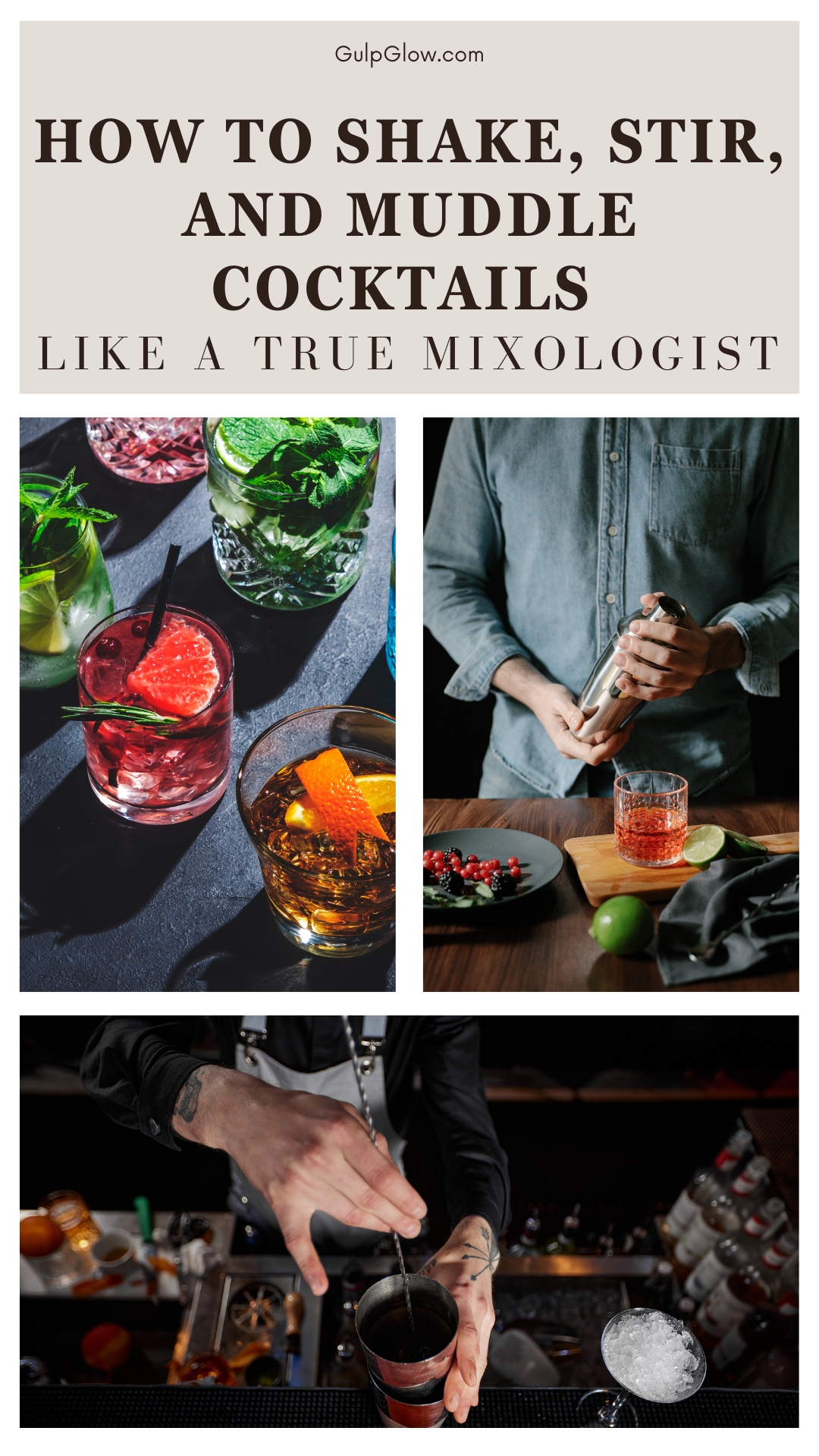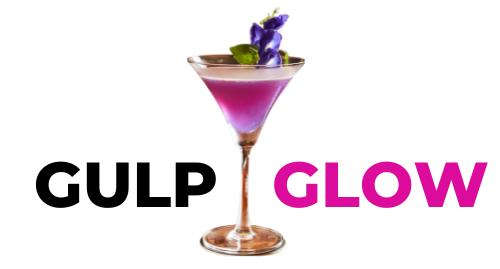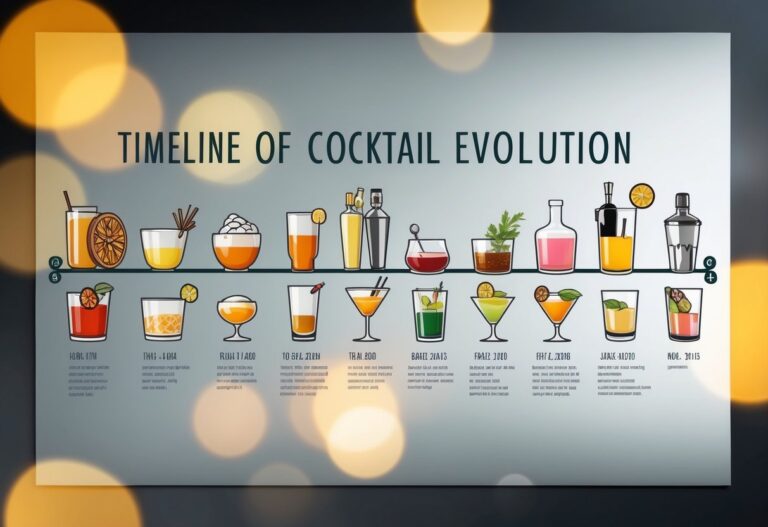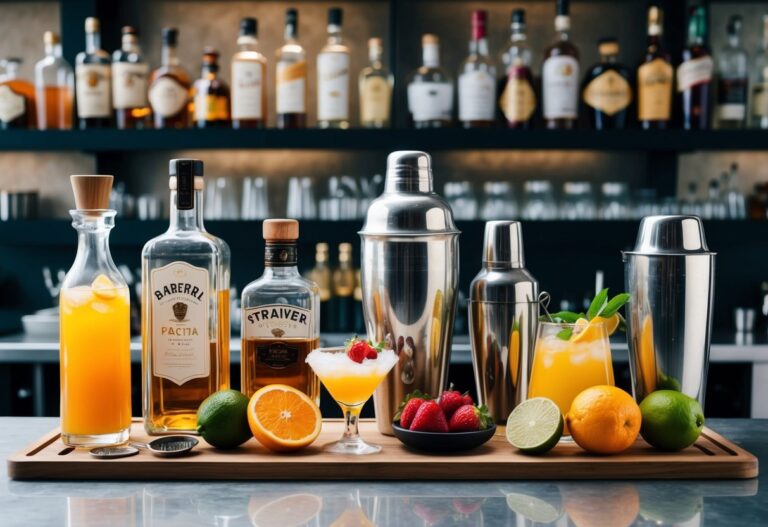Mixology Techniques: Mastering Shaking, Stirring, and Muddling Like a Pro
Mixology is more than just making drinks; it’s an art form that blends technique and creativity. Whether you’re a beginner or a seasoned pro, mastering the basics like shaking, stirring, and muddling can elevate your cocktail game. Learning these techniques not only improves the taste but also enhances the overall experience of your drinks.

You may wonder why shaking or stirring makes such a difference. Well, it’s all about the science of dilution and chilling. When you shake a cocktail, you’re not just mixing ingredients. You’re also chilling and diluting it, which changes the texture and flavor in subtle ways. Stirring, on the other hand, is perfect for spirit-forward cocktails where you want a smoother finish without too much air.
And let’s not forget muddling! This technique is crucial for releasing the essential oils and flavors in herbs and fruits. You simply press down and twist a muddler in your glass, ensuring your drink is infused with the freshest flavors. Mastering these basic techniques opens the door to a world of creative possibilities in mixology.
Understanding Mixology Basics
Mixology goes beyond just mixing drinks; it combines art and science to create delightful cocktails. The following sections will explore what mixology is, the necessary tools, and the importance of ingredients.
Defining Mixology and Its Significance
Mixology is the practice and art of crafting cocktails. It’s not just about pouring spirits into a glass; it involves precise techniques like shaking, stirring, and muddling. Mixologists study the balance of flavors and the impact of different ingredients.
A good mixologist can make a cocktail that’s visually appealing and tastes amazing. Mixology has evolved over centuries and now includes a variety of techniques and styles. From bartending to competitive cocktail crafting, being skilled in mixology can set you apart.
Essential Bar Tools and Glassware
To create amazing cocktails, you need the right tools. Here’s a list of the essentials:
- Shaker (Boston Shaker, Cobbler Shaker): For mixing drinks quickly.
- Mixing Glass: Ideal for stirred drinks.
- Strainer (Hawthorne Strainer, Julep Strainer): Keeps ice and muddled ingredients out.
- Jigger: For accurate measuring of spirits and ingredients.
- Bar Spoon: Perfect for stirring and layering drinks.
- Muddler: Crushes fruits, herbs, and spices to release their flavors.
The glassware is just as important. Different drinks are served in specific glass types like martini glasses, highball glasses, and old fashioned glasses. Each type enhances the presentation and experience of the drink.
The Role of Ingredients in Cocktail Crafting
Ingredients are the heart of any cocktail. They include spirits, mixers, garnishes, and flavorings like syrups and bitters. The quality and combination of these ingredients can make or break a drink.
Spirits like vodka, whiskey, and rum form the base. Mixers such as juices, sodas, and tonic waters add complexity. Fresh citrus, fruits, and herbs not only add flavor but also make the drink look appealing.
A well-crafted recipe balances all these elements, considering temperature, dilution, and presentation. Whether you’re using a classic recipe or inventing something new, the ingredients must work together to create a harmonious, enjoyable cocktail.
Mastering Cocktail Techniques
Want to mix cocktails like a pro? Learn how to shake, stir, muddle, and layer your drinks to bring out the best flavors and aromas. Master these techniques to create perfectly balanced cocktails every time.
Shaking: When and How to Shake Cocktails
Shaking a cocktail is essential when you need to mix ingredients thoroughly, chill them quickly, and add some dilution. You’ll typically shake cocktails with fruit juice, cream, or egg whites.
How to Shake a Cocktail:
- Add all ingredients to the cocktail shaker.
- Fill the shaker with ice, halfway to two-thirds full.
- Close the shaker tightly to avoid leaks.
- Hold the shaker with both hands and shake vigorously for around 10-15 seconds.
- Strain the mixture into a glass.
Shaking creates a frothy texture and aerates the drink, giving it a light, fluffy quality.
Stirring: Techniques to Stir Cocktails
Stirring is ideal for spirit-forward drinks where you want to maintain clarity and a silky texture. Stirred cocktails include classics like the Martini and Manhattan.
Steps to Stir a Cocktail:
- Pour all ingredients into a mixing glass.
- Add ice until the glass is about three-quarters full.
- Use a bar spoon and stir gently for about 30 seconds.
- Strain into a chilled glass.
Stirring ensures the drink is cold and diluted just enough without breaking the ice or clouding the liquid. This method keeps your cocktail crystal clear and smooth.
Muddling: Extracting Flavors and Aromas
Muddling is used to release essential oils and flavors from fresh ingredients like mint, lime, or sugar. This technique is common for drinks like the Mojito.
Muddling Steps:
- Use a sturdy glass with a solid base.
- Place your fresh ingredients (like mint leaves and lime) at the bottom of the glass.
- Use a muddler to gently press and twist, extracting the oils and juices without smashing the ingredients.
Tip: Don’t over-muddle. That can make your drink taste bitter.
Layering and Building Drinks
Layering adds a visual element to your cocktails and involves carefully pouring ingredients so they form distinct layers. This technique usually applies to drinks like the B-52 shot.
How to Layer a Cocktail:
- Pour the heaviest ingredient (most dense) into the glass first.
- Hold a bar spoon over the glass and slowly pour the next ingredient over the back of the spoon to minimize mixing.
- Repeat with additional layers as needed.
This technique requires a steady hand but results in a striking, colorful drink. It’s more than just looks, though. Each sip lets you experience different flavors.
Implementing these techniques with precision can elevate your craft and ensure each cocktail is impeccably balanced, flavored, and visually appealing.
Exploring Classic and Contemporary Cocktails

Classic cocktails like the Martini and Manhattan have stood the test of time, while modern twists and signature creations show off the creativity of today’s bartenders. From using fresh ingredients to innovative techniques, these drinks capture both tradition and innovation.
The Classics: Martini, Manhattan, and More
Classic cocktails have a long history and remain popular for their reliable flavors and elegance.
Martini: Known for its simplicity, the classic Martini uses only gin and dry vermouth, garnished with an olive or a lemon twist. It’s a favorite for its crisp and clean taste.
Manhattan: A mix of whiskey, sweet vermouth, and bitters, this cocktail is often garnished with a cherry. It’s known for its rich, smooth flavor profile.
Other timeless classics include the Old Fashioned, which combines whiskey, sugar, and bitters, and the Negroni, a equal parts cocktail made with gin, vermouth, and Campari. Each of these drinks showcases a balance of flavors that has made them enduring favorites.
Modern Twists and Signature Creations
In recent years, bartenders have brought a creative flair to cocktails, crafting unique and innovative drinks.
Mojito: Fresh mint, lime juice, rum, sugar, and soda water make for a refreshing drink that’s perfect for hot days.
Caipirinha: This Brazilian favorite uses cachaça, sugar, and lime to create a vibrant and fresh cocktail.
Signature creations also give bartenders a way to show off their skills. For example, a modern take on the Daiquiri might include fruit infusions or unusual syrups. These innovative approaches highlight the bartender’s creativity and the ongoing evolution of mixology.
In any modern cocktail, expect fresh ingredients and inventive combinations. Whether you’re trying a modern twist or sticking with a classic, there’s a drink for every taste.
Advanced Mixology Skills

Discovering advanced mixology skills can elevate your bartending game. This section covers complex techniques for experienced bartenders and mastering presentation and garnishes to create visually appealing and flavorful cocktails.
Complex Techniques for Experienced Bartenders
Experienced bartenders often use infusion and barrel-aging to add depth and unique flavor profiles to spirits. Infusing spirits with fruits, herbs, and spices can create complex tastes. Try infusing vodka with fresh berries or bourbon with vanilla and oak chips.
Molecular mixology is another advanced technique involving foams, gels, and even liquid nitrogen. These methods not only enhance flavors but also create exciting textures and visual appeal. For instance, using an egg white to create frothy layers in cocktails adds both flavor and body.
Advanced bartenders also experiment with bitters and vermouth to bring out intricate aromas. By understanding the role of each ingredient, you can craft cocktails that offer a multi-layered tasting experience.
Mastering Presentation and Garnishes
Presentation is a key element in mixology. The visual appeal of a cocktail can enhance the overall drinking experience. Skilled bartenders use various techniques to create stunning cocktails. For example, shaking cocktails with citrus oils or fruit juices not only mixes the ingredients but also chills and dilutes them for the perfect pour.
Garnishing is another critical aspect. Think of garnishes as the final brushstroke on a painting. A sprig of mint, a twist of lemon peel, or even a dash of colorful bitters can elevate a drink’s appearance and aroma. Using tools like zesters and peelers, you can create intricate citrus twists or elegant fruit slices.
Glassware also plays a pivotal role. Serving a frothy cocktail in a coupe glass or a layered drink in a highball glass adds to the craft and depth of your creation. So, don’t underestimate the power of the right glass.
Elevating Your Home Bar Experience
Turning your home bar into a place of joy and fun is possible with the right mix of tools, ingredients, and creativity! Creating a unique set of drinks and having a well-stocked bar can impress guests and enhance your bartending skills.
Curating a Home Bar Collection
Start with essential spirits like whiskey, vodka, rum, gin, and tequila. Having a variety ensures you can make multiple cocktails.
Don’t forget mixers such as tonic water, soda, and juices. These will expand your drink options.
Bar tools are crucial. A Boston shaker, strainer, muddler, and jigger are basics. A well-organized home bar makes the mixing process smoother.
Glassware matters too. Different cocktails require different glasses, like highball glasses for tall drinks and martini glasses for classic cocktails.
Developing Your Own Recipes and Flavors
Creating your own cocktails involves experimenting with flavors and ingredients. Start by tweaking classics, like adding a twist to a margarita.
Use fresh ingredients for the best flavors. Fresh herbs, fruits, and quality spirits make a considerable difference.
Measure each ingredient accurately. Consistency is key in recipe development.
Finally, be bold! Innovation in mixology can lead to discovering unique blends. Keep notes on what works and what doesn’t to refine your creations.
Frequently Asked Questions
Learn the essential mixology techniques of shaking, stirring, and muddling to make perfect cocktails. We’ll cover when to use each method and some classic cocktails that benefit from these techniques.
What’s the difference between shaking and stirring a cocktail?
Shaking a cocktail adds dilution and chills the drink quickly. It’s ideal for cocktails with juices, cream, or egg whites. Stirring, on the other hand, creates a smoother texture and less dilution, perfect for spirit-focused drinks like martinis or Manhattans.
Can you list a few cocktails that are best served with muddled ingredients?
Absolutely! Drinks like mojitos, caipirinhas, and old fashioneds benefit greatly from muddled ingredients. Muddling releases oils and juices from fresh ingredients like mint or lime, enhancing the drink’s complexity.
What exactly does ‘muddling’ do to a drink’s flavor profile?
Muddling breaks down fresh ingredients, releasing their essential oils and juices. This process intensifies the flavors of herbs and fruits, adding layers of taste that are otherwise impossible to achieve. It’s like a flavor explosion in your glass!
How can I tell when to shake, stir, or muddle a cocktail?
Simple rule of thumb: shake if you’ve got juices or cream, stir if your cocktail is spirit-forward like a Negroni, and muddle when using fresh ingredients like herbs or fruit. Your cocktail’s recipe often guides the method.
What are some classic cocktails that require the stirring method?
Classic cocktails that are typically stirred include the martini, Manhattan, and Negroni. These drinks rely on smooth, balanced flavors that are best achieved through stirring rather than shaking.
What’s the ‘golden rule’ of mixology that every bartender should follow?
The ‘golden rule’ is to always taste your drinks before serving. This ensures the balance is right and the flavors are harmonious. It’s a simple tip, but it can make all the difference between a good drink and a great one.







